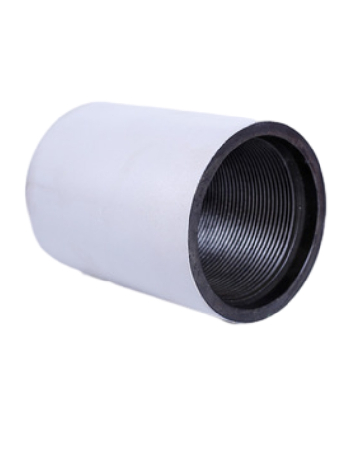- Afrikaans
- Albanian
- Amharic
- Arabic
- Armenian
- Azerbaijani
- Basque
- Belarusian
- Bengali
- Bosnian
- Bulgarian
- Catalan
- Cebuano
- Corsican
- Croatian
- Czech
- Danish
- Dutch
- English
- Esperanto
- Estonian
- Finnish
- French
- Frisian
- Galician
- Georgian
- German
- Greek
- Gujarati
- Haitian Creole
- hausa
- hawaiian
- Hebrew
- Hindi
- Miao
- Hungarian
- Icelandic
- igbo
- Indonesian
- irish
- Italian
- Japanese
- Javanese
- Kannada
- kazakh
- Khmer
- Rwandese
- Korean
- Kurdish
- Kyrgyz
- Lao
- Latin
- Latvian
- Lithuanian
- Luxembourgish
- Macedonian
- Malgashi
- Malay
- Malayalam
- Maltese
- Maori
- Marathi
- Mongolian
- Myanmar
- Nepali
- Norwegian
- Norwegian
- Occitan
- Pashto
- Persian
- Polish
- Portuguese
- Punjabi
- Romanian
- Russian
- Samoan
- Scottish Gaelic
- Serbian
- Sesotho
- Shona
- Sindhi
- Sinhala
- Slovak
- Slovenian
- Somali
- Spanish
- Sundanese
- Swahili
- Swedish
- Tagalog
- Tajik
- Tamil
- Tatar
- Telugu
- Thai
- Turkish
- Turkmen
- Ukrainian
- Urdu
- Uighur
- Uzbek
- Vietnamese
- Welsh
- Bantu
- Yiddish
- Yoruba
- Zulu
coupling tube fitting
An Overview of Coupling Tube Fittings
In various industries, the efficient transfer of fluids and gases is crucial for operational success. Whether in manufacturing, construction, or pharmaceuticals, ensuring that systems remain leak-free and securely connected is paramount. One of the essential components used to achieve these goals is the coupling tube fitting. This article delves into the definition, types, applications, and advantages of coupling tube fittings, highlighting their significance in modern engineering.
What are Coupling Tube Fittings?
Coupling tube fittings are mechanical devices designed to connect two or more sections of tubing. They create a secure junction that allows for the efficient transfer of fluids or gases while minimizing the risk of leaks. Typically constructed from materials such as stainless steel, brass, or plastic, these fittings can accommodate various types of tubing, including rigid, semi-rigid, and flexible tubes.
Types of Coupling Tube Fittings
There are various types of coupling tube fittings, each suited for specific applications. The most common types include
1. Compression Fittings These fittings function by compressing a ring around the tube with the help of a nut. They are ideal for high-pressure applications, offering a strong sealing capability.
2. Flare Fittings Flare fittings are designed with a conical seat that allows the tubing to create a tight seal when properly tightened. They are often used in applications with high temperatures and pressures.
3. Push-to-Connect Fittings These innovative fittings enable quick and easy connections without the need for tools. Tubing can be inserted into the fitting, creating a seal through an internal mechanism. This feature is particularly beneficial in automated processes where efficiency is key.
4. Welded Fittings These fittings are permanently attached to tubes using welding techniques. They provide robust connections suitable for extreme environments but are not easily removable.
coupling tube fitting

5. Screw-On Fittings With a simple screw mechanism, these fittings allow for easy assembly and disassembly. They are favored in situations where regular maintenance is essential.
Applications of Coupling Tube Fittings
Coupling tube fittings are widely used across various industries. In the oil and gas sector, they ensure the safe transport of hydrocarbons under high pressures. In the chemical processing industry, they help in connecting tubes that carry corrosive substances, requiring fittings made from resistant materials. Additionally, in the pharmaceutical sector, these fittings play a pivotal role in ensuring that sterile processes remain intact.
Other fields such as HVAC systems, automotive industries, and food and beverage processing also benefit from coupling tube fittings. Their versatility makes them suitable for a broad range of applications, ensuring safe and effective transfer regardless of the fluid or gas in question.
Advantages of Coupling Tube Fittings
The incorporation of coupling tube fittings into any system comes with notable advantages. First and foremost, they provide a secure and leak-proof connection, which is critical in maintaining system integrity. Their ease of installation can significantly reduce downtime, an essential factor in production environments.
Moreover, coupling tube fittings are often designed for versatility, allowing them to be used with multiple tube sizes and materials. This adaptability can lead to cost savings, as organizations can reduce inventory complexity.
Finally, many modern fittings are designed with user-friendliness in mind, incorporating features that allow for easy assembly and disassembly. This aspect is particularly advantageous for maintenance and repair work, reducing the overall operational cost.
Conclusion
In summary, coupling tube fittings are integral components within a myriad of applications across different industries. Their diverse types, coupled with significant advantages, make them essential for maintaining the efficiency and safety of fluid and gas transfer systems. As industries continue to evolve and adapt to new technologies, the role of coupling tube fittings will remain crucial in facilitating seamless operations.
-
Tubing Pup Joints: Essential Components for Oil and Gas OperationsNewsJul.10,2025
-
Pup Joints: Essential Components for Reliable Drilling OperationsNewsJul.10,2025
-
Pipe Couplings: Connecting Your World EfficientlyNewsJul.10,2025
-
Mastering Oilfield Operations with Quality Tubing and CasingNewsJul.10,2025
-
High-Quality Casing Couplings for Every NeedNewsJul.10,2025
-
Boost Your Drilling Efficiency with Premium Crossover Tools & Seating NipplesNewsJul.10,2025







